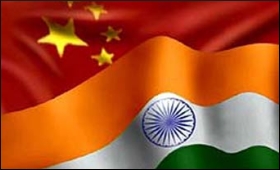|

|
India, China growth helping developing nations: World Bank
|
|

|
|
| Top Stories |
 |
|
|
|
Arun Kumar | 24 Apr, 2010
But for the rapid progress made by India and China, the pace of poverty reduction in developing countries would have been still slower after the global economic crisis, according to World Bank's lead economist.
"The crisis struck just when the developing countries were making significant strides, especially in poverty. Poverty rates were falling in all regions," Delfin Go, lead author of a new World Bank report, told reporters on Friday.
"Even in Africa, the rate was falling about one percent a year from the mid-nineties to about 2005. Although population was growing, the number of poor was actually decreasing because of the rapid progress in China and India," he said.
The Global Monitoring Report 2010: The MDGs After the Crisis," released Friday ahead of the two-day Bank-Fund meetings over the weekend, says as a result of the crisis, 53 million more people will remain in extreme poverty by 2015 than otherwise would have.
In South Asia, there was a very rapid decline (in poverty) because of India, Go said. "But outside of India, the rate of reduction of poverty is less, so with the crisis, they will also be harder hit than, let's say, India," he said noting "India was growing very fast even in recent months and years."
"So the key driver for poverty reduction is always growth, and the way to get a quick reaction or look at what is happening at poverty, then, is to look at that big driver where economic growth is the hardest hit," Go said.
"The fortunate thing about low-income countries is that although the growth rates came down for many countries, as a group, it was not negative even in 2009 at the height of the crisis."
Many of the hard-hit countries were more than high-income/middle-income countries, where they depended very much on private capital flows, he said.
Noting that China and India have provided some of the markets for other low-income countries, Go stressed that "the recovery of growth in developing countries will provide stimulus and a market for high-income countries."
Noting there is a mutual gain in keeping low-income countries buoyant and growing in the next several years, he said developing countries need to regain the momentum in achieving the Millennium Development Goals. But they will need help in terms of development assistance, trade expansion and recovery, open access to markets, affordable private capital, and continuing strong support from international financial institutions like the World Bank and the IMF, Go said.
|
|
|
| |
|
|
|
|
|
|
|
|
|
|
|
|
|
|
| |
| Customs Exchange Rates |
| Currency |
Import |
Export |
US Dollar
|
84.35
|
82.60 |
UK Pound
|
106.35
|
102.90 |
Euro
|
92.50
|
89.35 |
| Japanese
Yen |
55.05 |
53.40 |
| As on 12 Oct, 2024 |
|
|
| Daily Poll |
 |
 |
| Do you think Indian businesses will be negatively affected by Trump's America First Policy? |
|
|
|
|
|
| Commented Stories |
 |
|
|
|
|
|
| |
|